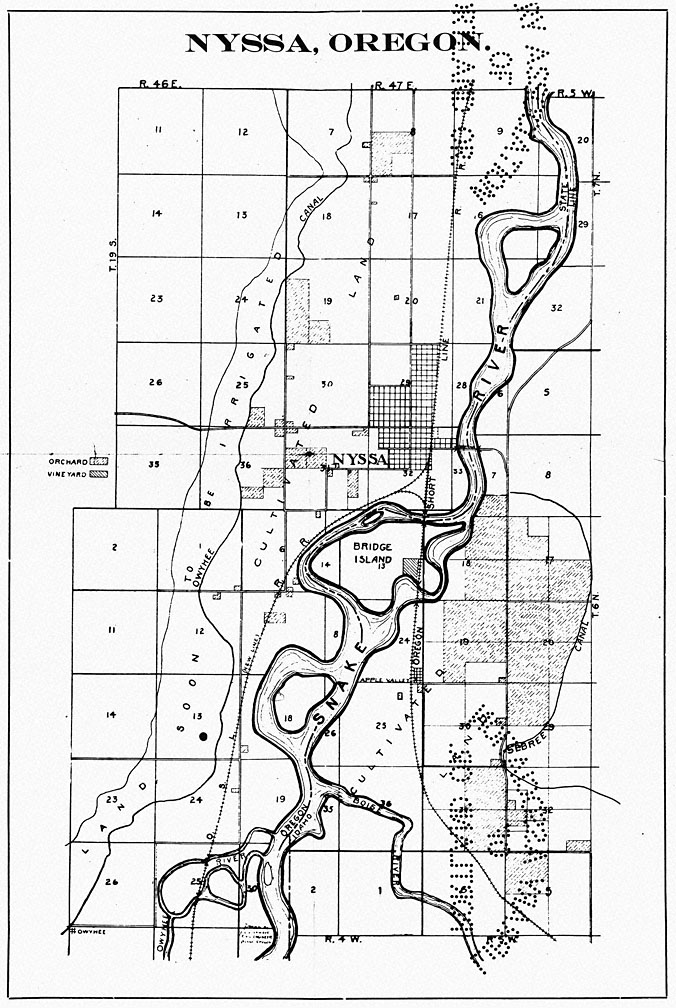- Catalog No. —
- OrHi 104226
- Date —
- c. 1911
- Era —
- 1881-1920 (Industrialization and Progressive Reform)
- Themes —
- Environment and Natural Resources, Geography and Places, Race, Ethnicity, and Nationality
- Credits —
- Oregon Historical Society
- Regions —
- Northeast
- Author —
- Nyssa Commercial Club
Facts about Snake River Valley at Nyssa, Oregon
This map is from a circa 1911 brochure promoting the “progressive and growing city” of Nyssa, located in northern Malheur County on the Idaho state line. The brochure highlights the farming potential of the arid region and advises people to “carefully read this folder through. … We know the possibilities of this valley. We want you to know them for there is plenty of room for us all.”
The Owyhee Ditch Company gave Nyssa its earliest irrigation by diverting water from the Owyhee and Snake rivers into canals. Between 1903 and 1905, the federal Reclamation Service considered large-scale irrigation in the area, but it was not until 1928 that the government began building the Owyhee Dam. Workers finished the 417-foot-tall arch gravity-dam in 1932 and began delivering water to farmers in 1935.
Irrigation attracted people to the region. During the 1930s, people fleeing the Dust Bowl settled in Nyssa to take advantage of a federal Farm Security Administration program to give farmers low-interest loans and aid during the Great Depression. During WWII, hundreds of Japanese Americans went to work on sugar beet farms in and near Nyssa as an alternative to wartime internment camps. At the end of the war, German prisoners of war worked on area farms. Mexican-Americans have also lived and worked in the area and today half of Nyssa’s population is Hispanic.
Written by Kathy Tucker, © Oregon Historical Society, 2002.
